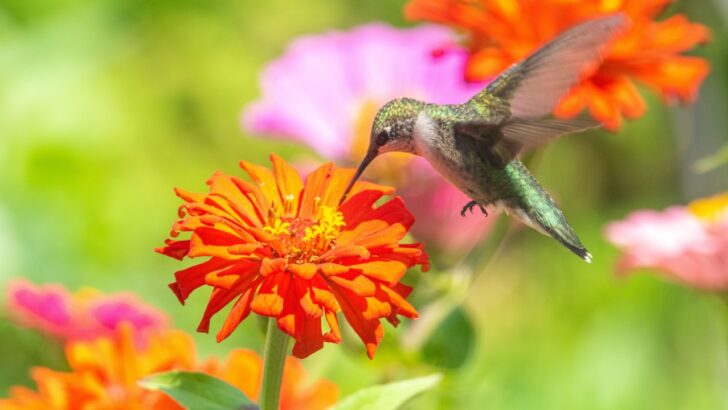A tiny hummingbird dipping its beak into nectar-filled blossoms is certainly a special sight. Fill patio containers, hanging baskets, and gaps in flower beds with annual flowers that attract hummingbirds to encourage more of these lovely little friends to visit.
The only thing more stunning than flowers in full bloom is the wildlife that visits them!
1. Salvia (Salvia spp.)
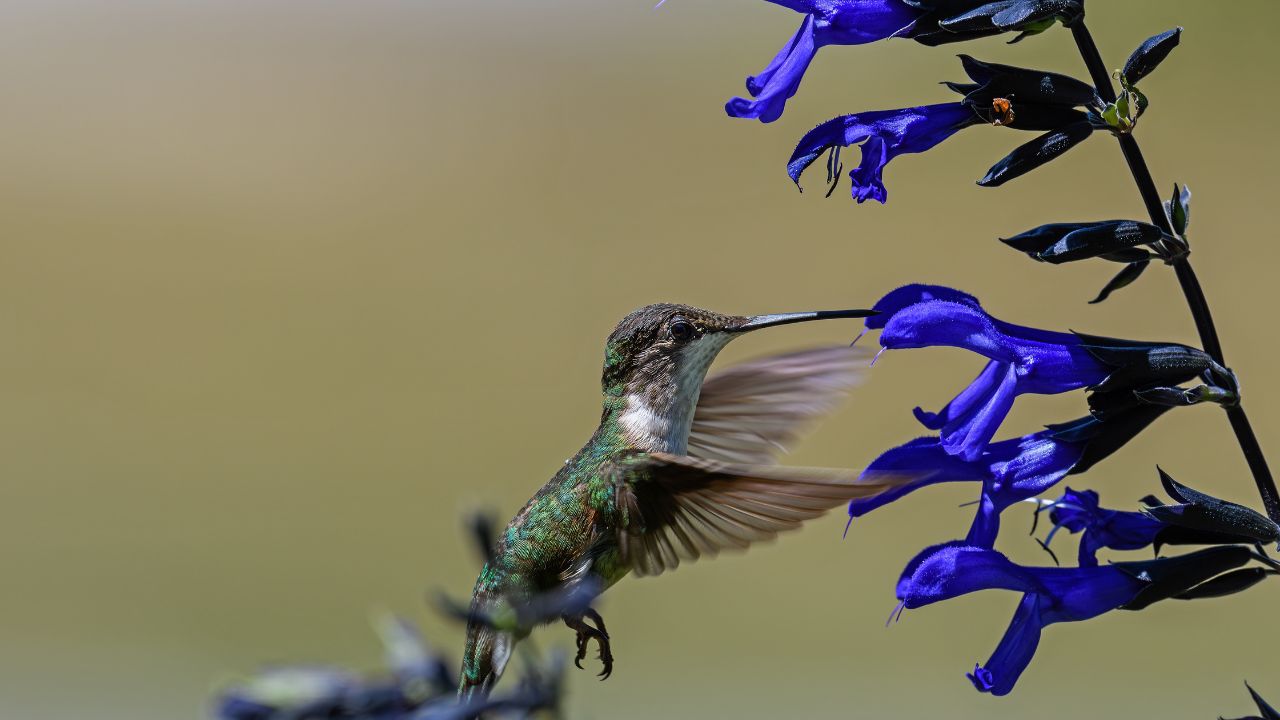
Image Credit: Shutterstock.
Many species and cultivars of salvia, or sage, exist, ranging in size, flower color, and other features. But all of them produce beautiful spikes of late-season, tubular flowers that hummingbirds and other pollinators find attractive.
Salvia prefers well-drained, highly organic soil and full sun to partial shade. Many varieties are typically grown as annuals but will overwinter in warmer areas, such as zones 8-10.
2. Fuchsia (Fuchsia x hybrida)
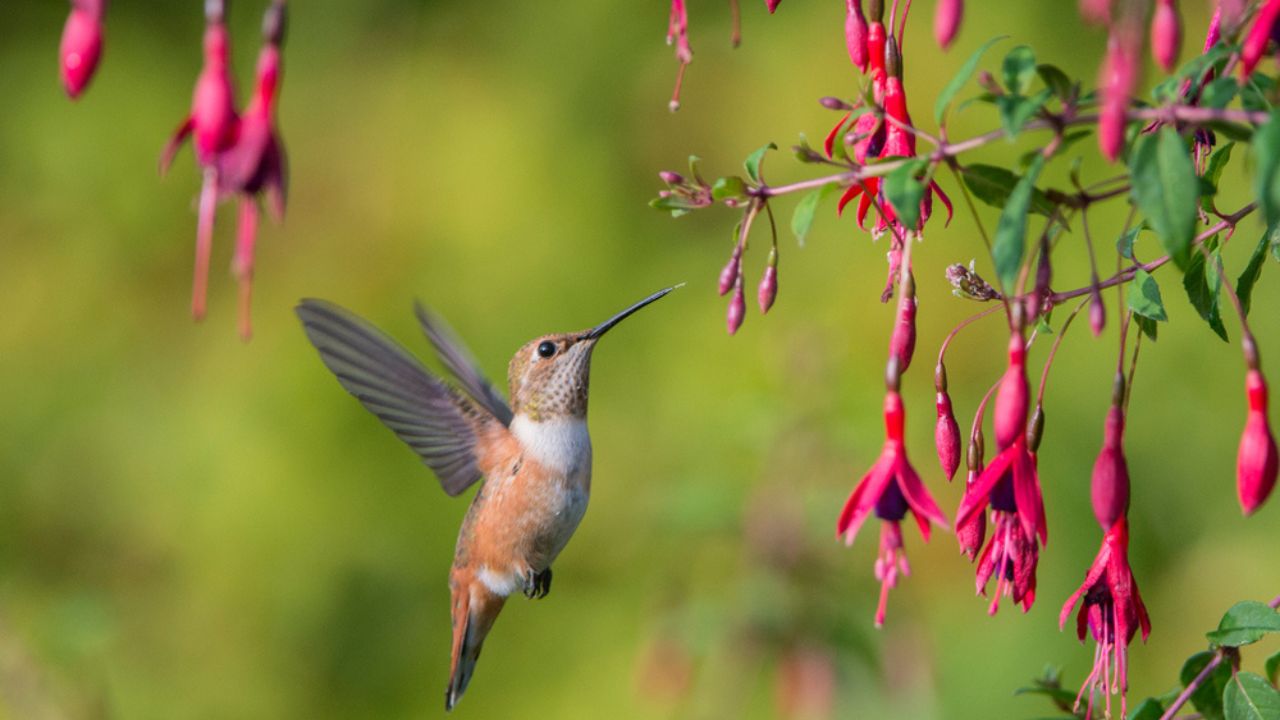
Image Credit: Shutterstock.
Loved for its striking pink, often bicolor, flowers, fuchsia adds a pop of bright color to shady areas of the garden. It blooms from spring into fall, with a slower period in the heat of summer. Varieties range from upright forms great for containers or borders to drooping habits perfect for hanging baskets.
Fuchsia needs partial to full shade and moist, rich soil. It also prefers cooler summers and will not tolerate drought. Learn more about growing fuchsia.
3. Pincushion Flower (Scabiosa atropurpurea)
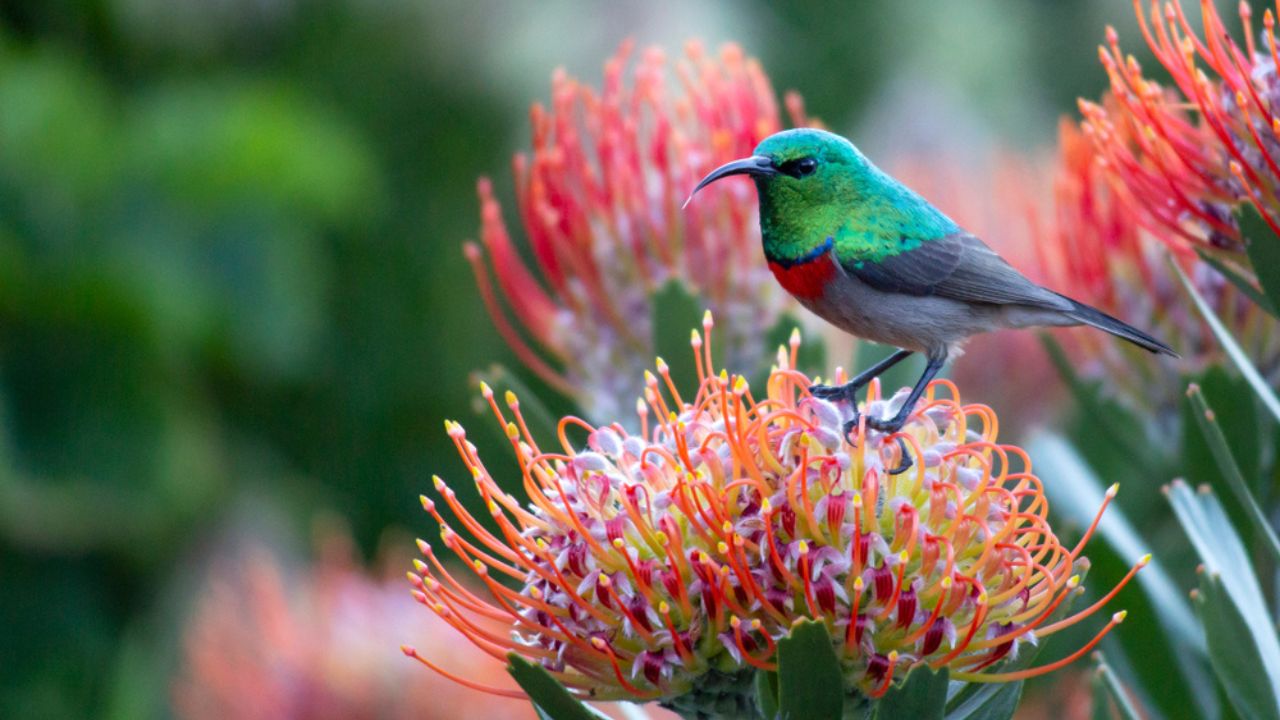
Image Credit: Shutterstock.
Pincushion flower blooms from late spring into and sometimes through summer, with blossoms that resemble round pincushions filled with needles. The flowers are beautiful in fresh and dried arrangements. With long stalks, the two- to three-foot plants sometimes require extra support.
This bushy Mediterranean plant requires well-drained, organically rich soil and full sun. In ideal conditions, it may self-sow and can sometimes become weedy.
4. Firecracker Plant (Cuphea ignea)
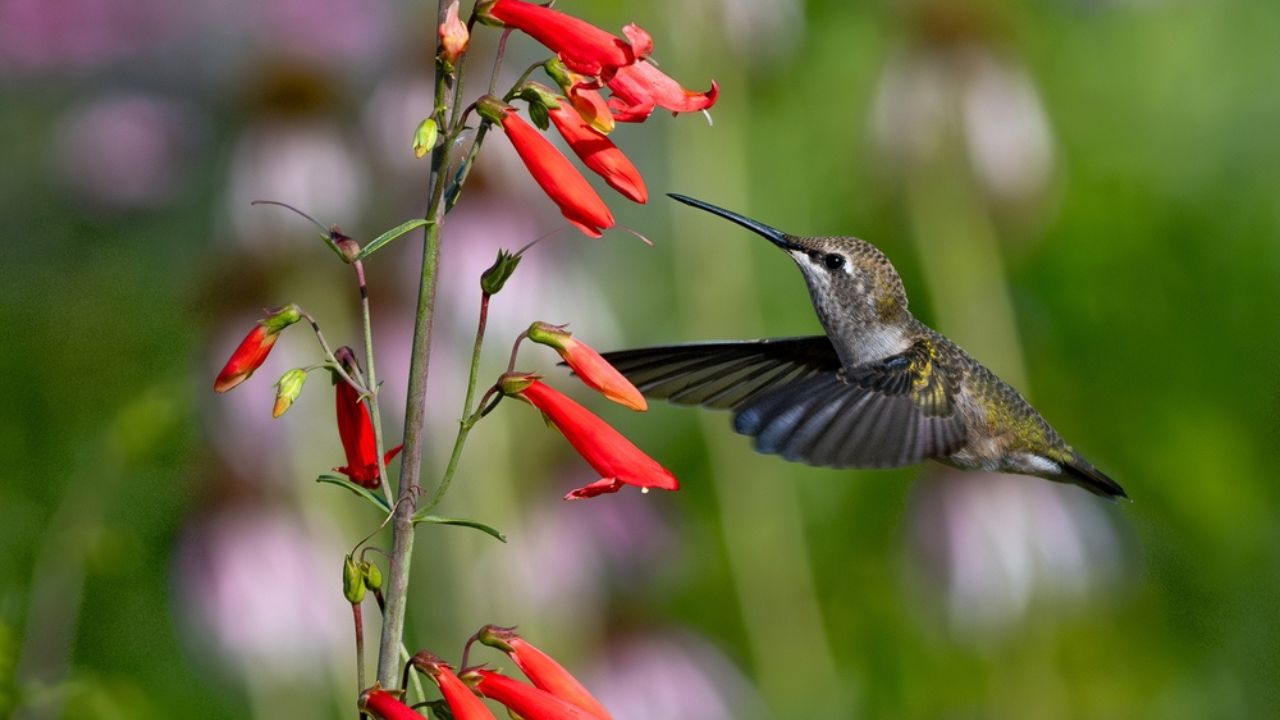
Image Credit: Shutterstock.
The numerous small, red, tubular flowers of firecracker plant attract hummingbirds and other pollinators all season long. At just one to two feet tall, this neat, rounded plant grows well in containers and can even be overwintered indoors, where it will continue to bloom.
Firecracker plant prefers full to part sun and moist, well-drained soil, but will tolerate some drought.
5. Zinnia (Zinnia elegans)

Image Credit: Shutterstock.
Bright, cheery zinnias come in a range of bold reds, pinks, yellows, and oranges that liven up any space, from the garden to a vase filled with a freshly cut bouquet. They bloom all summer, attracting pollinators as well as the admiring gazes of people. Depending on the variety, they grow six inches to three feet tall.
These versatile, easy-to-grow flowers require full sun and appreciate organically rich, well-drained soil. Learn more about growing zinnias.
6. Lantana (Lantana camara)
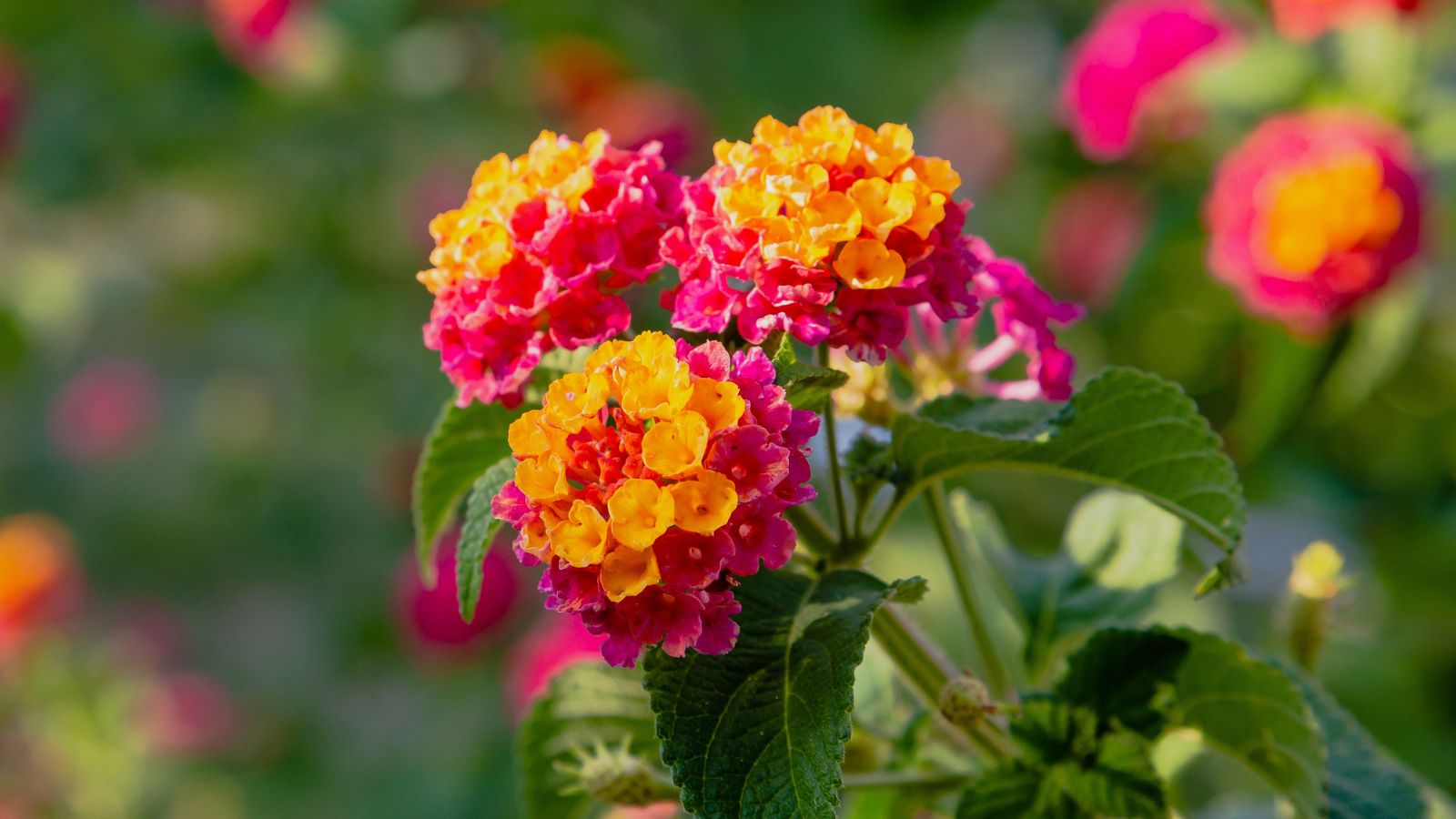
Image credit: Depositphotos.
From midsummer until fall, lantana produces striking, often multicolored, rounded clusters of tiny flowers in vivid shades of yellow, orange, pink, and sometimes other colors. These showy flowers grow happily in beds as well as containers.
Lantana grows best in full sun and moist, well-drained soil. It will tolerate poor soil, salt, and drought. In warmer regions, where it can be grown as a perennial, lantana may spread aggressively.
7. Brazilian bellflower (Callianthe megapotamica)
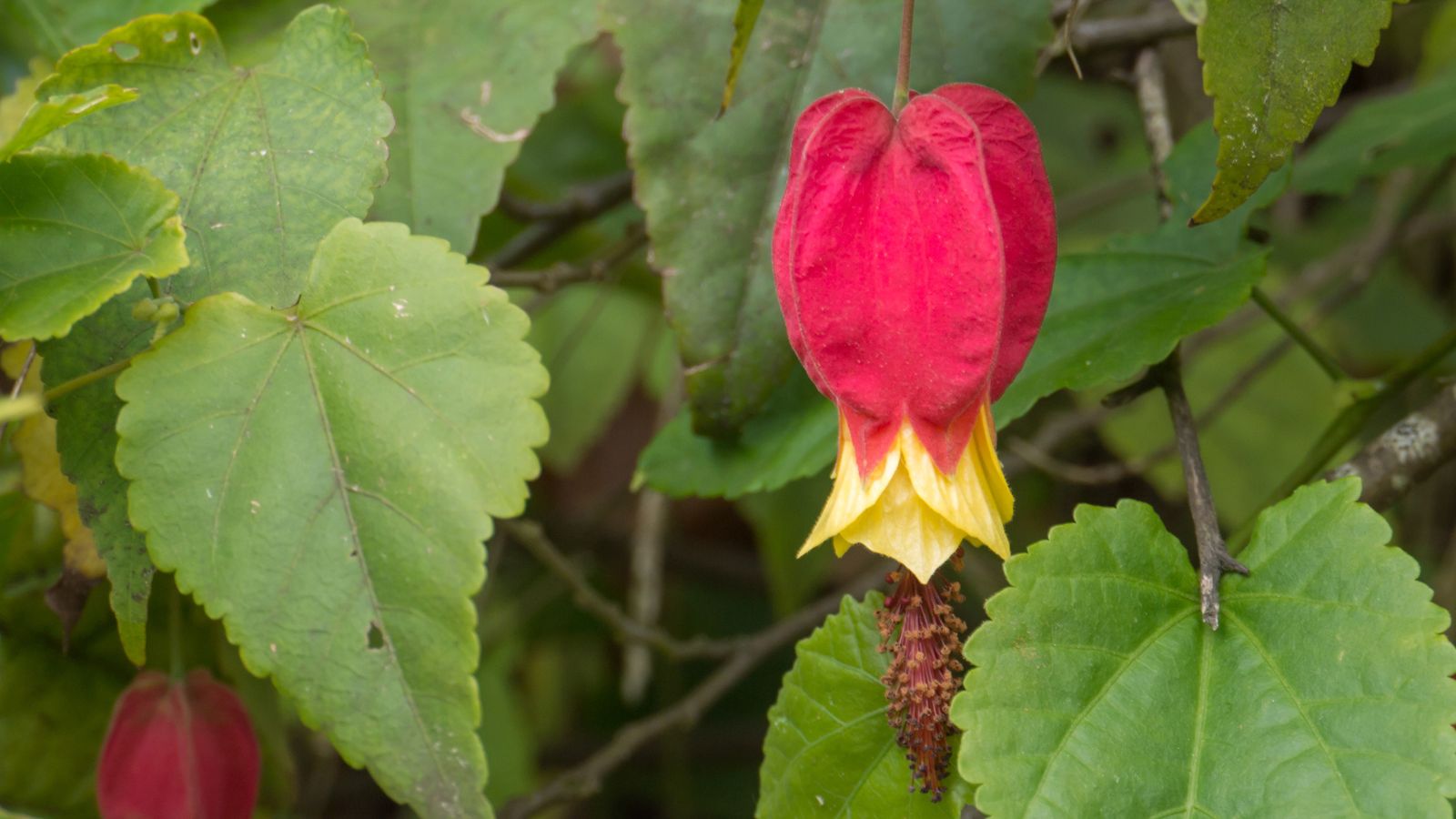
Image credit: Depositphotos.
The unique dangling, bell-shaped blossoms of Brazilian bellflower have yellowish petals and reddish calyxes for a beautiful contrast of vibrant colors. This tropical perennial is grown as an annual in most parts of the US and can be brought inside over winter for year-round blooms.
Brazilian bellflower prefers full to part sun and moist, well-draining soils rich in organic matter.
8. Calibrachoa (Calibrachoa x hybrida)
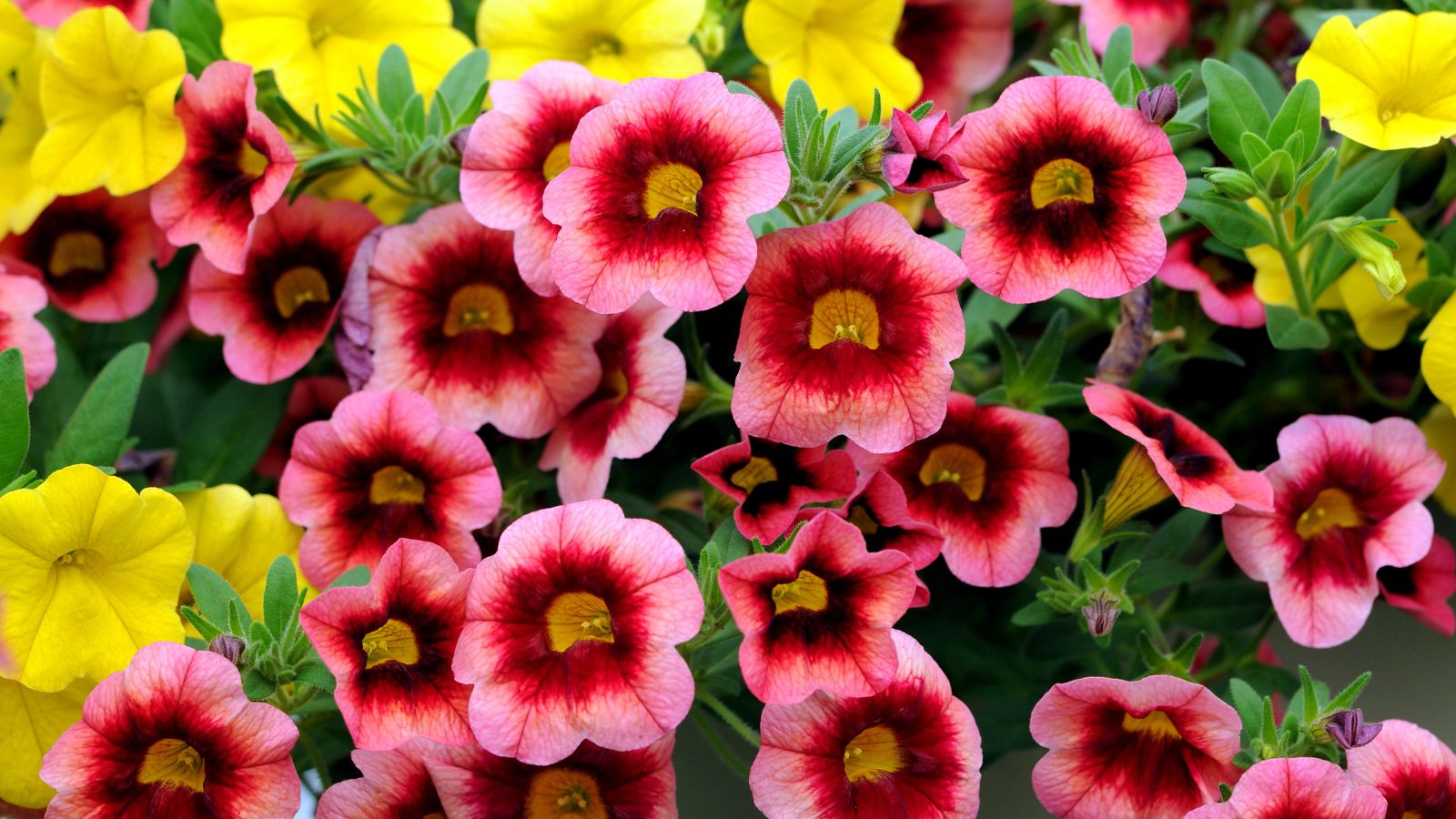
Image credit: Depositphotos.
Often called million bells or trailing petunia, calibrachoa closely resembles petunias. It grows just a few inches tall but spreads to form a carpet of cheery, trumpet-shaped flowers throughout the summer. Calibrachoa comes in a range of colors and grows well in containers and hanging baskets.
This hardy little plant tolerates part shade, drought, and heat, though it grows best in rich, moist, well-drained soil in full sun.
9. Mexican sunflower (Tithonia rotundifolia)

Image Credit: Shutterstock.
Looking something like a zinnia, Mexican sunflower has orange-red flowers with golden centers that bloom from midsummer into fall. These fiery flowers attract bees and butterflies as well as hummingbirds. Growing three to six feet tall, they sometimes need staking.
Mexican sunflower thrives in full sun and average, well-drained soil, though it actually prefers poor soils and will tolerate drought.
10. Nasturtuim (Tropaeolum spp.)

Image Credit: Shutterstock.
Nasturtiums bloom from late spring into fall, with showy, trumpet-shaped flowers in shades of yellow, orange, or red. Not only do nasturtiums attract hummingbirds and pollinators, but all aboveground parts of the plant are edible and have a peppery flavor.
Nasturtiums grow best in poor, well-drained soils and full sun with some afternoon shade to protect from summer heat. See more tips for growing nasturtiums.
11. Spider Flower (Cleome spp.)
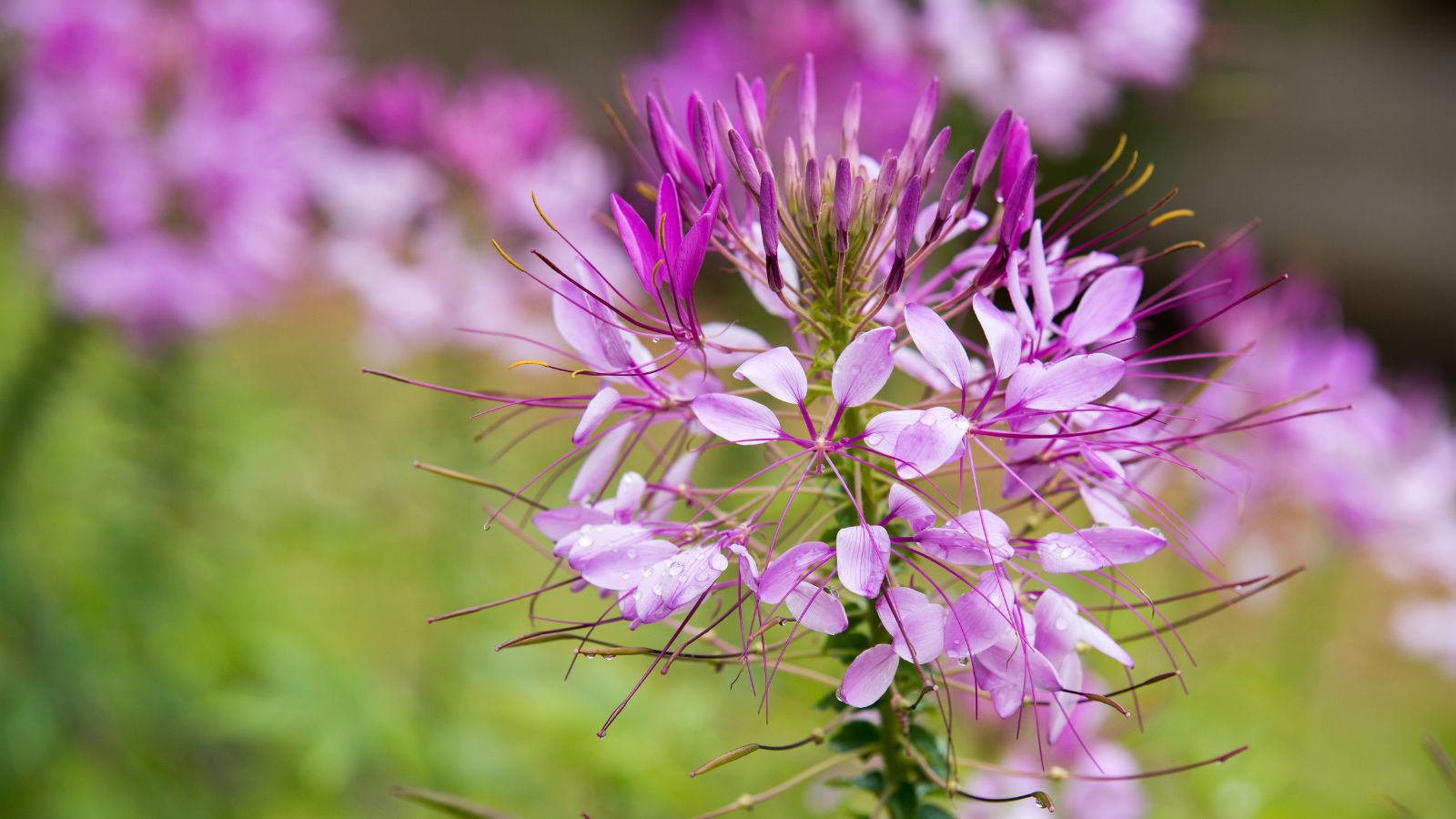
Image credit: Depositphotos.
Ranging from dwarf plants to towering six-foot specimens, the spider flower genus (Cleome) includes more than 100 species and many cultivars. Spider flowers get their name from the long stamens protruding from the white to purple flowers that bloom in large clusters throughout the summer.
Spider flower has some drought tolerance but prefers moist, well-drained soil in full sun.

